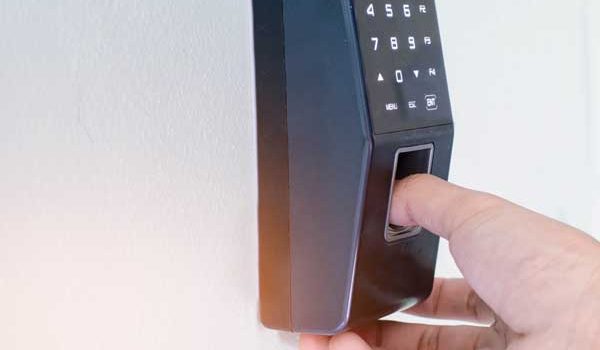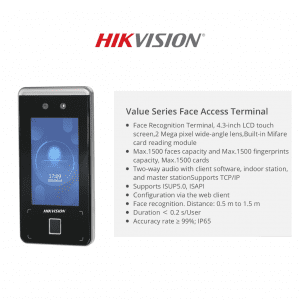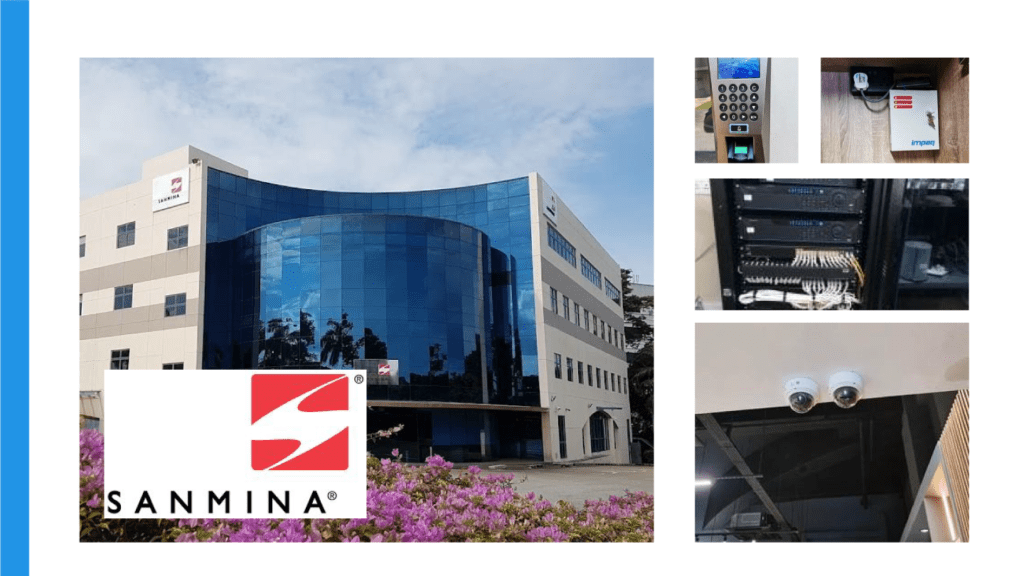
10 Benefits of having a Door Access Control System for your Business

Security demands are continually evolving. Door access control systems and keyless entry is becoming increasingly widespread for property managers, building owners and even small enterprises. Access control systems allow individuals secure and safe access to their premises and inside workplaces. Before moving on, you may want to look at information we have placed on our Door Access page.
To evaluate whether you need an access system, please examine the following reasons for purchase.
- Remote access
- Customizable
- History records
- Non duplication
- Security
- Less costly in the long run/Less trouble
- Faster, safer than locks
- Create a Safe Work Environment
- Keep Track of Who Comes and Goes
- Time Attendance System
The fundamental function of an access system is to keep unwelcome visitors out or at least have control over access. A storage facility may benefit from both a gate entrance system and a keyless access system for the individual storage units. Remote access is a big advantage so people no longer have to visit to site to open or lock doors, simply done remotely saving time and money. Also, access systems are flexible so the management may have greater limitations than the staff, configure the permissions per person to assure the access level wanted.
As well as regulating access to your premises, access control systems may be connected with other operational and security systems. Alarm monitoring that will take action if an intruder does get in, and software that will manage time and attendance for your staff, can be other things you want to explore.
New IP door control systems are less costly and gives better capability than the previous central panel systems. These systems may simply be combined with IP camera systems and IP intercoms to form a full safety and security solution.
Key card or key fobs access systems may assist to reduce loss thus while not cheap to setup, they are all around less costly. Taylored Systems will be glad to give you with a quotation. Tracking staff time, theft and possible vandalism are cost saving measures. These cards and fobs cannot be reproduced like the standard key style. Keyless access, electronic keys demand a greater degree of expertise.
The finest access control systems give historical reports. It will watch your employees’ behavior and enable you to see precisely where they spend their time and check if they are visiting prohibited sites. Additionally, you may obtain personalized reports such as information about your building’s security, alarm data, open and shut hours and more. Most of these reports are accessible through email, but many firms will send information straight to your smartphone so you can monitor your employees’ access while you are away. The reports are particularly important for investigating damage and theft.
Another advantage is having control of keys, wondering who all has them creates a breach in security when keys are lost but with a secure card or fob it is not clear to what door they belong. Replacing doors and possibly locks is costly and cumbersome. If a card or fob is misplaced, it may be readily deleted from the database. One key for several locks aids the control. Owners of various homes no longer have to dig trough heaps of keys for the suitable key.
If it is decided an access system would be advantageous, contact the specialists at Taylored Systems. We take great satisfaction in our understanding of access systems, look at here.
Steps to Proper Door Access Installation
Access control system installation includes various phases which include:
- The design stage
- Cabling
- Installation of readers, REX’s, door contacts, controllers, and any other devices necessary
- Initial system programming and client training sInstallation of electrified locking mechanisms and cutover of the system
- Final testing of the access control system
- Each of these processes are highly significant but the most vital is the design stage. This step entails defining what sort of electrified locking hardware is necessary at each door.
The Design Strategy
There are various considerations in choosing the correct locking device, including aesthetics, life safety standards, proper lock function, operation, and what device may be utilized with existing door hardware. An expert on door access control installation has the specific expertise to be able to select the best solution or help the client with these choices.
Making an inaccuracy in this section might generate extra charges after the fact if the Authority Having Jurisdiction (AHJ) doesn’t approve of the locking device. This may result in having to replace the electronic locking device and/or paying fines or penalties.
Choosing the Right Cabling for a Door Access System
Cabling is another subject needing considerable competence. The right cable has to be placed dependent upon the device. Readers, REX’s, door position switches, and electrified locking mechanisms all need particular kinds of cable. The placement for each of the devices has to be identified at this stage so that cabling may be put to the right destination. Device placements are critical because you want each device to be easily situated, but in a position that supports proper functioning of the system.
Installation of readers, REX’s, DPS, Controllers, interfacing of fire alarm panels, and other devices needs the knowledge of wiring, fundamentals, the understanding of AC and DC voltages, and the grasp of relay principles. This is another step that is best completed by skilled personnel since it involves understanding of electrical fundamentals, at a minimum.
How to Program and Install Door Access \sProgramming the access control system is often manufacturer specific and involves technical knowledge on the system being installed. Most access control systems have commonalities but each manufacturer has specific terminology and regulations that the technical training delivers.
Initial programming is substantially different from programming conducted by end users or by the administrator of the system. End users should get training by a certified teacher that has advanced expertise of the system being installed, but, the average end user doesn’t become engaged in the sophisticated programming aspect.
Most end users and administrators will be taught on the day to day duties they conduct. These include:
- Adding/deleting staff
- Modifying schedules
- Removing or adding credentials
- Once the preceding processes have been accomplished, a timeline for system cutover should be agreed upon both vendor and client. System cutover entails bringing the system online as a working access control system while simultaneously installing electrified locking devices. This may need a customer care person to help, depending on the amount of users, so that queries and updates may be handled.
Final Testing and Completing Door Access System Installation
Final testing of the system is highly critical. This entails testing of each device, panel, and interface of the access control system. Each lock should be inspected for good functioning, both during business hours and after hours. Both valid and incorrect credentials should be supplied to each reader on the system to verify the system reacts as planned. Any warnings or notifications should be triggered and checked to verify the system responds to these occurrences. Lastly, all doors should be inspected for free egress.
The interface to the fire alarm panel should also be verified to assure good functionality. The door access/fire alarm interface test should be done each time the fire alarm is tested, or at a minimum of two times each year. When testing the fire panel interface, it is critically essential to check internal doors, external doors, and fire rated doors perform as needed by life safety and fire laws. These test findings should be recorded and preserved alongside fire alarm testing records.
Client Work

